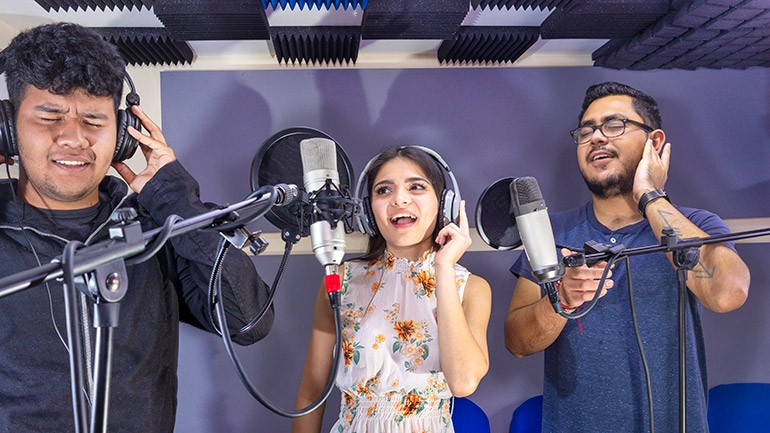Perfecting Harmony
How and where to use vocal harmony in a mix, from a simple third above the main melody to multi-layered backgrounds that help accent the chord progression, plus other suggestions

As listeners, we often take for granted some of the less obvious but essential elements that go into making an excellent record. One of those ingredients is vocal harmony, which can range from a basic third above the melody during a verse or chorus, to more sophisticated, multi-layered backgrounds that help support the lead vocal, or for filling empty spaces in between. Here are a few suggestions for adding harmony vocals to a mix, including the use of equalization, panning and sound processing as needed to ensure the tracks are properly focused.
Plan ahead for harmony. Good harmony ideas typically don’t happen by accident—that is, they are usually the result of a main melody that’s conducive to vocal counterpoint. Before you begin writing, then, consciously think of melody lines that can easily accept an upper or lower harmony interval, or perhaps even three-part harmony vocals (when doing the latter, try to use the melody as one part of the triad, rather than repeating the same line in the background vocal).
In addition to harmonizing over the lyric, you can create wordless vocal passages, such as a section of moving ‘ooos’ or ‘aahhs’ sprinkled intermittently throughout the song. Another effective technique is using a “call-and-response” vocal to emphasize parts of the lyric or melody, particularly during a chorus or pre-chorus—in some instances, such inserts can often be the hookiest part of the song.
Tracking the backgrounds. Once you have some ideas sketched out, you can decide where you’d like to inject the vocal backgrounds into the recording. Like many embellishments, sometimes less works best—that is, you may want to hold off on any backing “ooohs” until later in the song in order to create a dynamic contrast.
You may have noticed that on many songs the backgrounds tend to have a chorale-like effect. More often than not the entire vocal section has been recorded a second time, in effect turning a three-part harmony background into six voices total. This double-tracking technique can be incredibly effective, so long as you use only enough of the second pass to “widen” the sound.
While you’re recording, you might even try injecting an extra note into a basic couplet or triad harmony, such as a major second or a suspension, for instance, in order to give the part a “thicker” feel. You’ve got nothing to lose—if it doesn’t work, erase and move on.
Mixing ideas. How you place your background vocals across a stereo mix can be a subjective decision, but one that may be informed by the nature of the rhythm track. For example, if the recording is relatively spare and has lots of open space, you could consider mixing the vocals in stereo, particularly if the arrangement has multiple parts and/or you’ve double-tracked the original. Try not to spread the vocals too far apart—just slightly to the left and right of the centered lead vocal should do it. If you don’t like the sound of the backgrounds panned, you can just stack them in mono and place them either directly behind the lead vocal or slightly to the left or right.
While you’re at it, you could try adjusting the tone of the backgrounds by rolling off some low end, boosting the midrange, or making other EQ adjustments so that there’s a suitable contrast between lead and harmony vocals; under certain circumstances, a bit of compression, or effects like reverb or echo, can also help distinguish the background vocal sound.






Community
Connect with BMI & Professional Songwriters